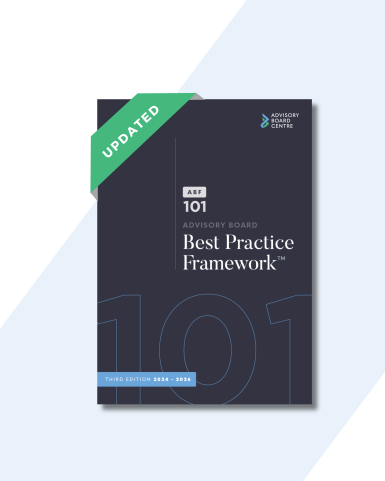
Thought Leadership Articles
MegaTrends Summit Reveals Key Sector Developments
Top 5 trends from Singapore Showcase 2024
Thought Leadership Articles
Published 19 November 2024

In this executive insights webinar, Advisory Board Centre founder Louise Broekman and CEO and Executive Director Udo Doring explored the role of advisory boards in building robust governance systems.
We’ve summarised the key takeaways from the session below, and shared access to the full recording for those of you who weren’t able to join us.
Lay the groundwork for success — set out the board’s scope right from the establishment phase. To avoid confusion, clearly define what topics are on the table and what are “off-limits”. This will strengthen the board’s effectiveness.
It’s surprising how often people mistakenly believe they are on a governance board, when they are actually on an advisory board — and vice versa. The function of an advisory board is about problem-solving, not decision-making. The advisory board helps an organisation tackle challenges, but ultimately, the decision-making authority lies with the governance board.
Advisory boards are inherently flexible; they can be created and disbanded, evolving over time based on an organisation’s needs. They may shift from providing advice on topical needs (such as digital transformation, cybersecurity, or geopolitics) to more general strategic guidance as the organisation grows and changes.
External advisors bring diverse perspectives from different markets and sectors, helping organisations avoid an echo chamber and fostering open-minded dialogue about challenges. But there’s no strict rule; Udo described a case study of a global pharmaceutical company that formed a Digital Transformation Advisory Board, appointing an internal executive as chair. This executive’s emotional intelligence, profound organisational knowledge, and authority were key assets in facilitating effective dialogue.
When outputs from the advisory board are reported directly to the governance board, it ensures that feedback remains unfiltered. This direct line of communication highlights the advisory board’s relevance, fostering respect for its role in shaping long-term strategy and planning.
Keen to learn more? Watch our webinar replay below.
Strong governance is the backbone of a resilient, ethical and thriving organisation. We look forward to continuing these valuable discussions as we collectively shape the future of advisory board best practice.
We actively partner with organisations to enhance advisory board activities. Our Advisory+ team can guide you at every stage of the process, from implementation to facilitation and evaluation. We also provide bespoke education and shortlisting services to maximise your advisory structures.
Advisory boards are what we do, everyday — reach out to us for support.

